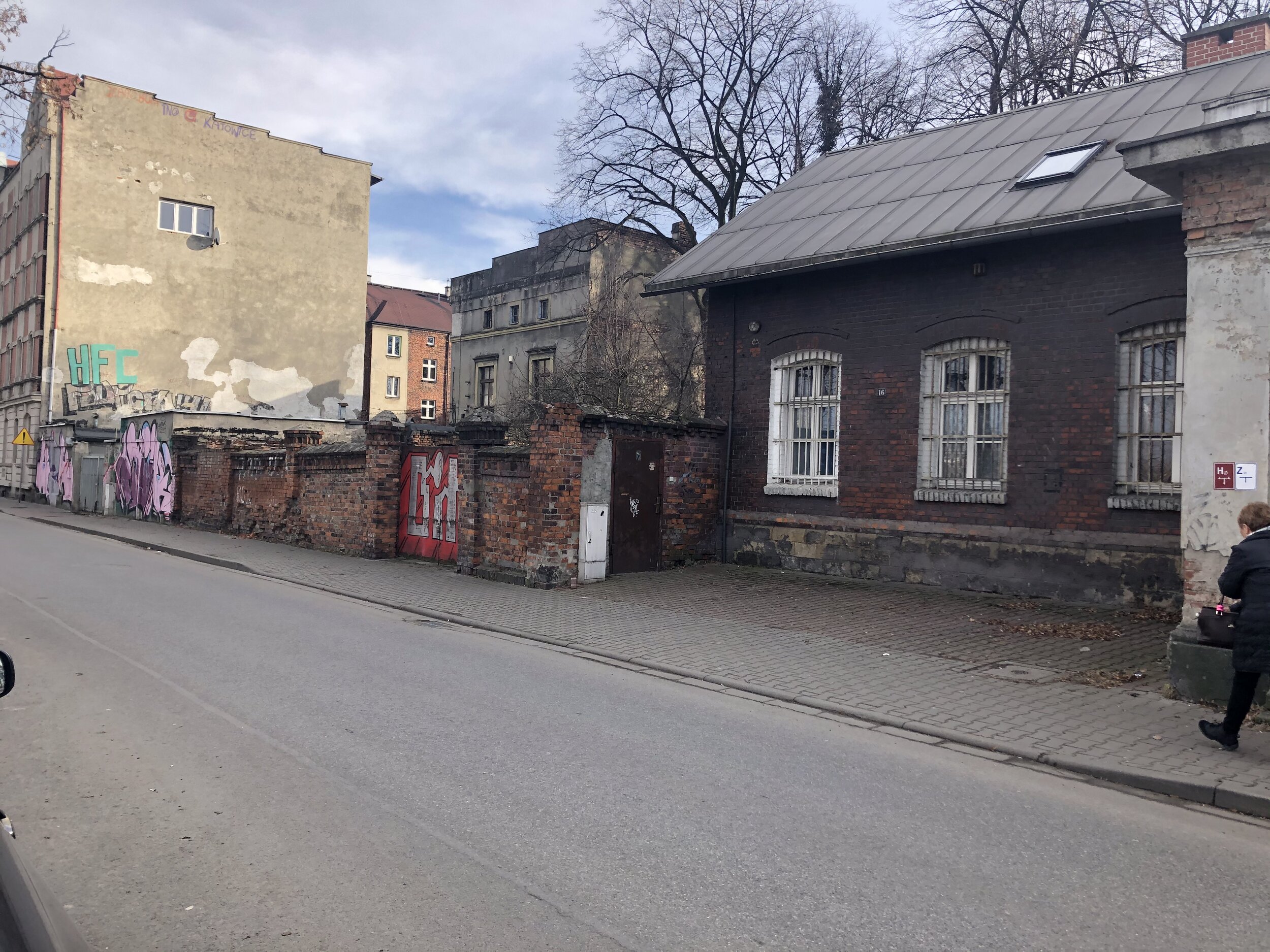Remembering Zbyszek Wieczorek 1957-2021 (May his memory be a blessing)
Every gesture of compassion in these terrible times is vital to life. Zbyszek Wieczorek, Nov. 11, 2020
Today I received the devastating news that a wonderful human being had died.
He had a clear voice: “The political and social tensions are all a result of the authorities’ negligence concerning the education of our citizens. A result of separating the history of the Jewish people from the history of the Polish people. It’s a crime against memory, and, in fact, we are trying to cope with the trauma caused by this crime right now. So it is not only the Holocaust itself that we have to make contemporary people aware of, but also this crime against memory.”
Zbyszek Wieczorek believed that silence was the enemy of memory. For years he was active in the mission of making schoolchildren aware that before the war almost 30% of the town’s residents had been Jews. Organizing a Jewish festival every May. Creating an annual a ceremony where his students read the names of Radom Jews who had been imprisoned in the ghetto (the ghetto to which his mother had brought bread every day): First name, last name, address, occupation, age.
And then: Przeżył or Zginał. Survived or perished.
Zginał. Zginał. Zginał, the students would read for person after person. And every once in a while—a great while—Przeżył.
Zbyszek was steadfast in his determination to keep the memory of Jewish Radom alive and to combat silence. He died several days ago from COVID 19. We have lost a powerful voice.
In February 2019 my cameraman and I spent a day in Radom with Zbyszek—first interviewing him for The Neshoma Project, then seeing some sights in Jewish Radom—like the Jewish cemetery cared for now by a Roma woman. There are no Jews left. The four of us (Zbyszek, me, my cameraman Przemek and Zbyszek’s translator friend) went to eat in an Italian restaurant after the interview. He was gracious about the screaming children next to us and about my need to order something off the menu due to my celiac disease. He was always gracious.
Our plan for me to spend several months in his classroom observing his teaching and telling the students about my family’s experience in Poland was derailed by COVID. But I always thought we would revive it.
Zbyszek Wieczorek was that perfect combination of head and heart. He thought deeply about memory, silence, compassion and he was a mentsch. In an email from last year he wrote: “Showing kindness and tenderness to each other is very necessary in our world… Every gesture of compassion in these terrible times is vital to life.”
Jewish memory in Poland, and particularly in Radom, has suffered because of your passing, Zbyszek. You were a gentle, yet fierce soul. I am lucky that our paths crossed for a short time. I will speak your name and do my part to prevent history from being distorted by the corrosive effects of silence.
Wspomnienie o Zbyszku Wieczorku 1957-2021
–Niech Jego pamięć będzie błogosławiona–
Każdy gest empatii i solidarności w tych strasznych czasach jest niezbędny dla życia. Zbyszek Wieczorek, 11 listopada, 2020
Dzisiaj otrzymałam druzgocącą wiadomość, że zmarł wspaniały człowiek.
Jego głos był klarowny: „Napięcia polityczne i społeczne są wynikiem zaniedbań rządzących w zakresie edukacji naszych współobywateli. To wynik oddzielenia historii narodu żydowskiego od historii narodu polskiego. To zbrodnia przeciwko pamięci i w istocie próbujemy teraz poradzić sobie z traumą spowodowaną tą zbrodnią. Trzeba więc uświadamiać współczesnych nie tylko o Holokauście, ale także o tej zbrodni przeciwko pamięci."
Zbyszek Wieczorek uważał, że milczenie jest wrogiem pamięci. Przez lata aktywnie działał na rzecz uświadamiania młodzieży szkolnej, że przed wojną prawie 30% mieszkańców miasta stanowili Żydzi. Co roku na wiosnę współorganizował festiwal Spotkania z Kulturą Żydowską „Ślad”. Zainicjował doroczną uroczystość, podczas której jego uczniowie wyczytywali nazwiska radomskich Żydów, którzy byli uwięzieni w getcie (do którego jego matka przynosiła codziennie chleb): imię, nazwisko, adres, zawód, wiek.
A potem: Przeżył lub Zginął
Zginął. Zginęła. Zginął – tak młodzież czytała przy kolejnej i kolejnej osobie. A od czasu do czasu—w dużych odstępach—Przeżył. Przeżyła.
Zbyszek nie ustawał w wysiłkach na rzecz zachowania pamięci o żydowskim Radomiu oraz w walce z milczeniem. Zmarł kilka dni temu na COVID 19. Straciliśmy potężny głos.
W lutym 2019 mój kamerzysta i ja spędziliśmy dzień w Radomiu ze Zbyszkiem, najpierw przeprowadzając z nim wywiad do Projektu Neshoma, a potem oglądając miejsca związane z żydowskim Radomiem, np. cmentarz żydowski, którym obecnie opiekuje się romska kobieta. Żydów już nie ma. Po wywiadzie nasza czwórka (Zbyszek, ja, mój kamerzysta Przemek oraz znajoma Zbyszka, która tłumaczyła rozmowę) poszliśmy coś zjeść we włoskiej restauracji. Był wyrozumiały wobec krzyczących obok nas dzieci i wobec mojej potrzeby zamówienia czegoś spoza menu z racji mojej celiakii. Zawsze był wyrozumiały.
Nasz plan, żebym spędziła kilka miesięcy uczestnicząc w jego lekcjach, obserwując jak uczy i opowiadając uczniom o doświadczeniach mojej rodziny w Polsce, pokrzyżowała pandemia. Ale cały czas sądziłam, że wrócimy do tego planu.
Zbyszek Wieczorek był idealnym połączeniem rozumu i serca. Miał głębokie przemyślenia na temat pamięci, milczenia, współodczuwania, o takim kimś w jidysz mówi się „mensz” (szlachetny człowiek). W wiadomości e-mail z zeszłego roku napisał: "Okazywanie sobie nawzajem życzliwości i czułości jest bardzo potrzebne w naszym świecie... Każdy gest empatii i solidarności w tych strasznych czasach jest niezbędny dla życia.”
Zbyszku, Twoje odejście to wielka strata dla pamięci o Żydach w Polsce, a szczególnie w Radomiu. Byłaś łagodną, ale i nieustępliwą duszą. Miałam szczęście, że nasze drogi skrzyżowały się choć na krótko. Będę wspominać Twoje imię i zrobię to, co do mnie należy, aby zapobiec zniekształcaniu historii przez niszczące skutki milczenia.
Leora Tec, 26.10.21














































